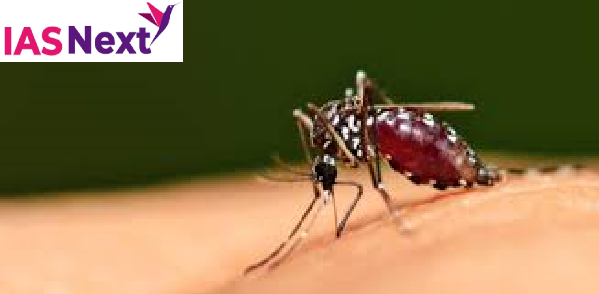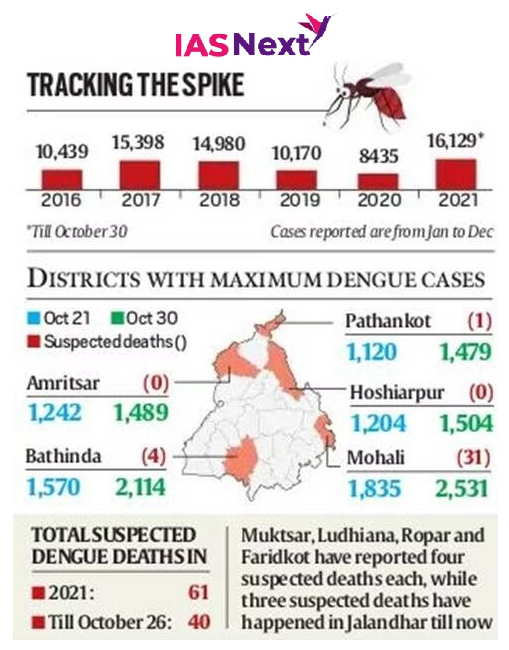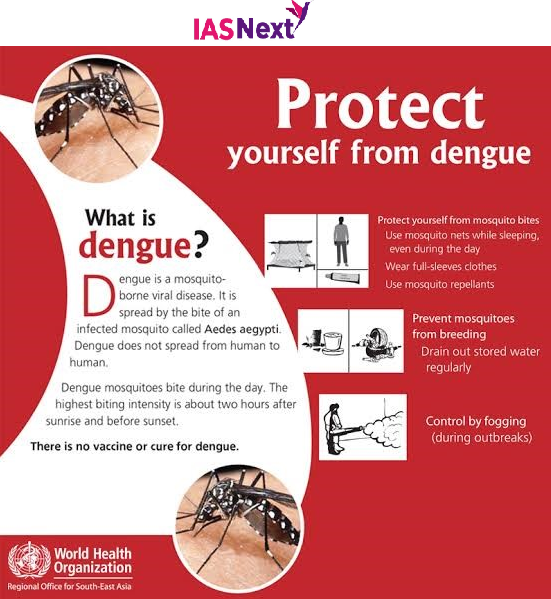CURRENT AFFAIRS
Get the most updated and recent current affair content on Padhaikaro.com
Dengue threat in India
- IAS NEXT, Lucknow
- 10, Nov 2021

Reference News:
The rate of spread of dengue in Delhi is rampant, with the total number of cases reported in just the first week of November being 1,171. The number of dengue cases reported in the national capital in the month of October was 1,196.
Measures undertaken:
The spike in dengue, malaria and chikungunya cases across Delhi is leading the local bodies and authorities to increase their fogging and spraying drives. The citizens are also being directed to make sure that there is no stagnant water collected near or inside their houses, as it provides a breeding space for the disease.

About Dengue:
- Dengue virus is transmitted through the bite of a female Aedes (Ae.) mosquito.
- Aedes is a day time feeder and can fly up to a limited distance of 400 meters.
- Although it usually results in mild illness, severe dengue infections can sometimes prove fatal.
- World Health Organization (WHO) estimates suggest an annual incidence of 100-400 million dengue infections every year, with its global incidence growing dramatically “in recent decades”.

Status of Dengue:
- Incidence of dengue has grown dramatically around the world in recent decades, with a vast majority of cases under-reported, according to the World Health Organization (WHO).
- WHO estimates 39 crore dengue virus infections per year, of which 9.6 crore show symptoms.
- India registered over 1 lakh dengue cases in 2018 and over 1.5 lakh cases in 2019, according to the National Vector-Borne Disease Control Programme (NVBDCP).
Controlling Dengue Using Bacteria:
Recently researchers from the World Mosquito Program have used mosquitoes infected with Wolbachia bacteria to successfully control dengue in Indonesia.
- The scientists infected some mosquitoes with Wolbachia and then released them in the city where they bred with local mosquitoes, until nearly all mosquitoes in the area were carrying Wolbachia bacteria. This is called the Population Replacement Strategy.
- At the end of 27 months, the researchers found that the incidence of dengue was 77% lower in areas where Wolbachia-infected mosquitoes had been released, as compared to areas without such deployments.